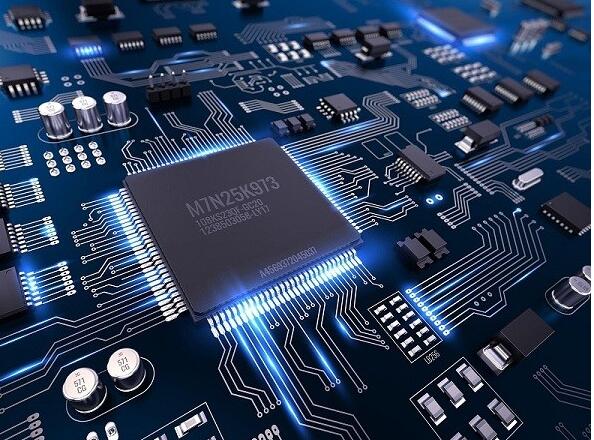Related PCB technology research
Process method
For some areas where the device is mounted on both sides, it is easy to cause local high temperature. In order to improve the heat dissipation conditions, a small amount of small copper can be mixed in the solder paste, and the solder joints under the device will have a certain height after reflow soldering. The gap between the device and the printed board is increased, and the convection heat dissipation is increased.
3.3 Requirements for the arrangement of components
(1) Perform software thermal analysis on PCB, and design and control the internal maximum temperature rise;
(2) It is possible to consider specially designing and installing components with high heat generation and large radiation on a printed circuit board;
(3) The heat capacity of the board is evenly distributed. Be careful not to place high-power devices in a concentrated manner. If it is unavoidable, place the short components upstream of the airflow and ensure that sufficient cooling air flows through the heat-consumption concentrated area;
(4) Make the heat transfer path as short as possible;
(5) Make the heat transfer cross section as large as possible;
(6) The layout of components should take into account the influence of heat radiation on surrounding parts. Heat sensitive parts and components (including semiconductor devices) should be kept away from heat sources or isolated;
(7) (Liquid medium) It is best to keep the capacitor away from the heat source;
(8) Pay attention to the direction of forced ventilation and natural ventilation;
(9) The additional sub-boards and device air ducts are consistent with the ventilation direction;
(10) Make the intake and exhaust as far away as possible;
(11) The heating element should be placed above the product as much as possible, and should be placed on the air flow channel when conditions permit;
(12) Components with high heat or high current should not be placed on the corners and peripheral edges of the printed board. If possible, they should be installed on the radiator, far away from other components, and ensure that the heat dissipation channel is unobstructed;
(13) (Small signal amplifier peripheral devices) Try to use devices with small temperature drift;
(14) Use metal chassis or chassis as much as possible to dissipate heat

.
3.4 Requirements for wiring
(1) Board selection (reasonable design of printed board structure);
(2) Wiring rules;
(3) Plan the minimum channel width according to the current density of the device; pay special attention to the channel wiring at the junction;
(4) The high-current lines should be as surface as possible; if the requirements cannot be met, the use of bus bars can be considered;
(5) Minimize the thermal resistance of the contact surface. For this reason, the heat conduction area should be enlarged; the contact surface should be flat and smooth, and can be painted if necessary.
Coated with thermal grease;
(6) Consider the stress balance measures for thermal stress points and thicken the lines;
(7) The heat-dissipating copper skin needs to adopt the window method of heat dissipation stress, and use the heat-dissipating solder mask to open the window properly;
(8) If possible, use large-area copper foil on the surface;
(9) Use larger pads for the ground mounting holes on the printed board to make full use of the mounting bolts and the copper foil on the surface of the printed board for heat dissipation;
(10) Place as many metalized vias as possible, and the aperture and disk surface should be as large as possible, relying on vias to help heat dissipation;
(11) Supplementary means for device heat dissipation;
(12) In the case where the large surface area of copper foil can be used, the method of adding a heat sink may not be used for economic reasons;
(13) Calculate the appropriate surface heat dissipation copper foil area according to the power consumption of the device, the ambient temperature and the maximum allowable junction temperature (guarantee principle tj≤(0.5~0.8)tjmax).
4. Thermal simulation (thermal analysis)
Thermal analysis can help designers determine the electrical performance of components on the PCB, and help designers determine whether components or PCBs will burn out due to high temperatures. Simple thermal analysis only calculates the average temperature of the PCB, while complex ones require the establishment of transient models for electronic devices containing multiple PCBs and thousands of components.